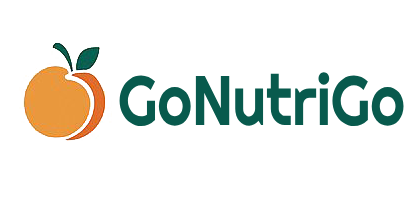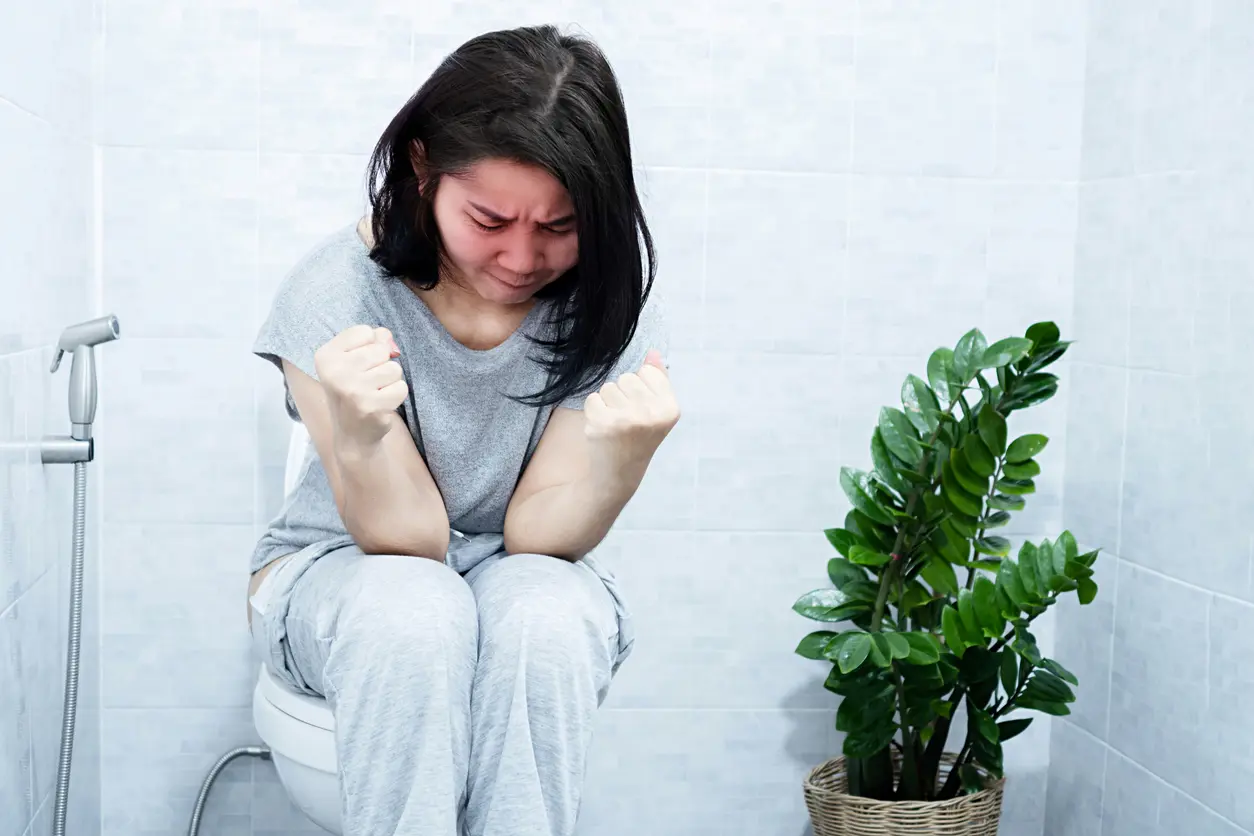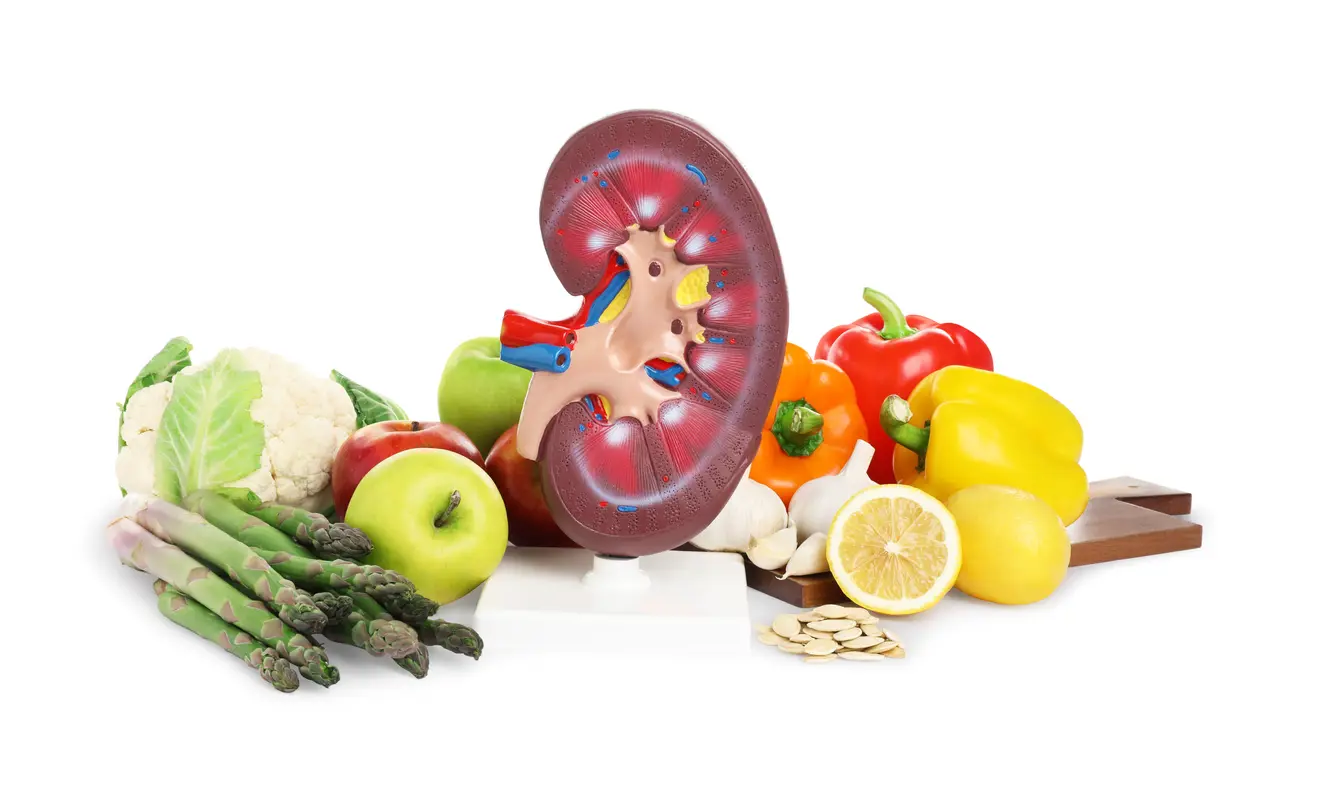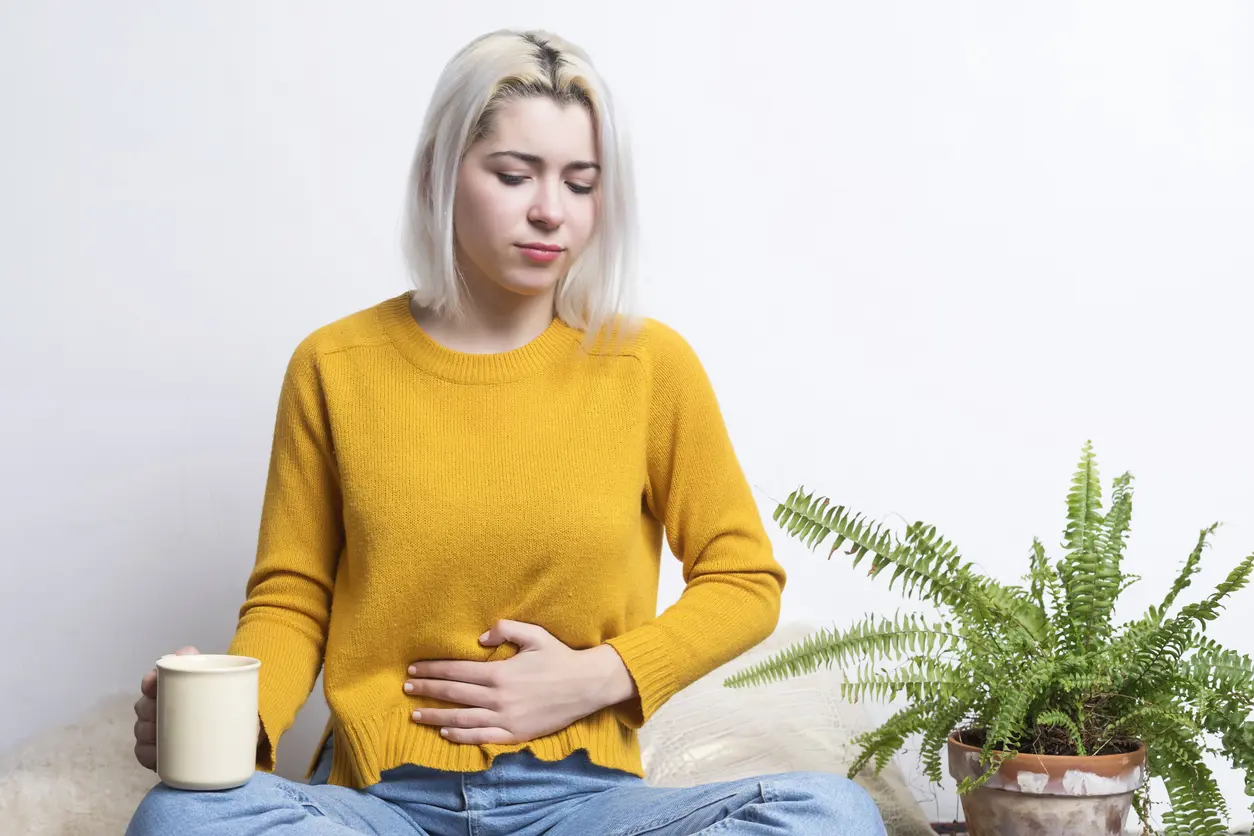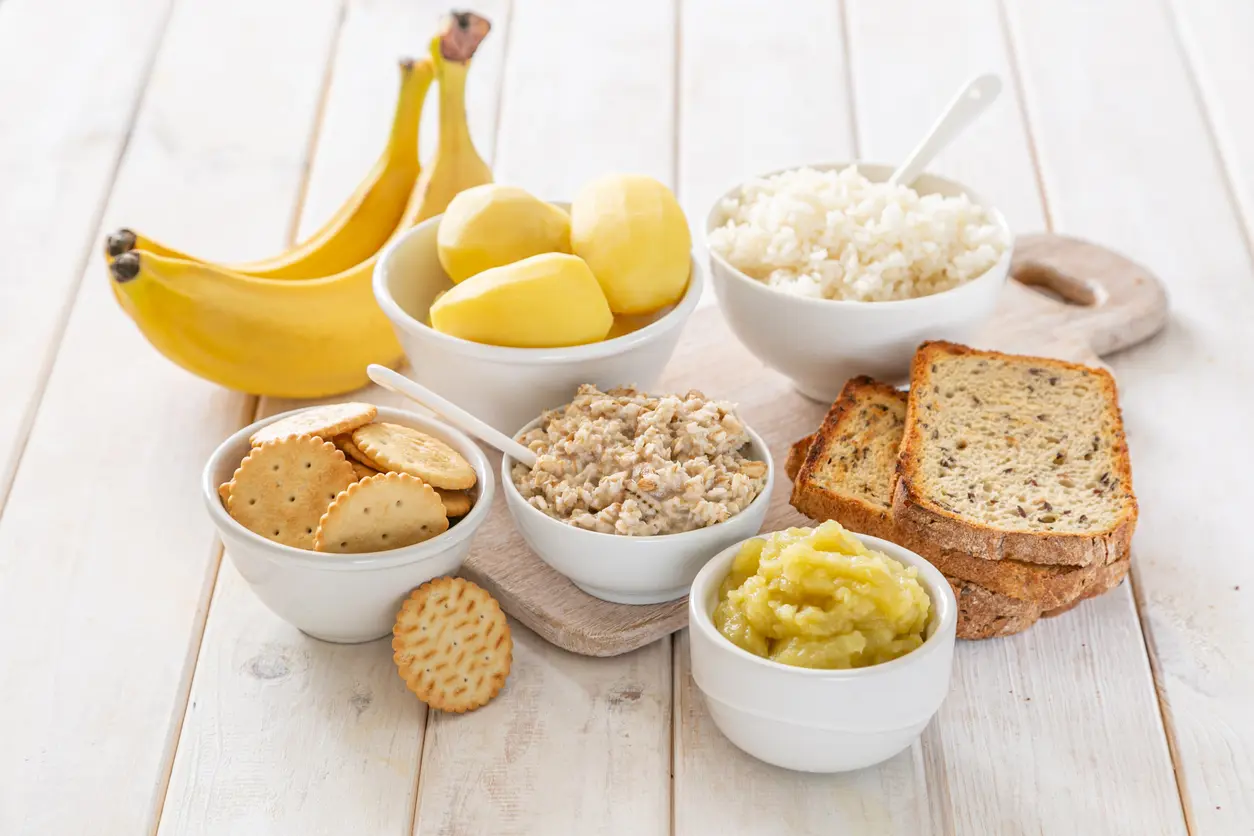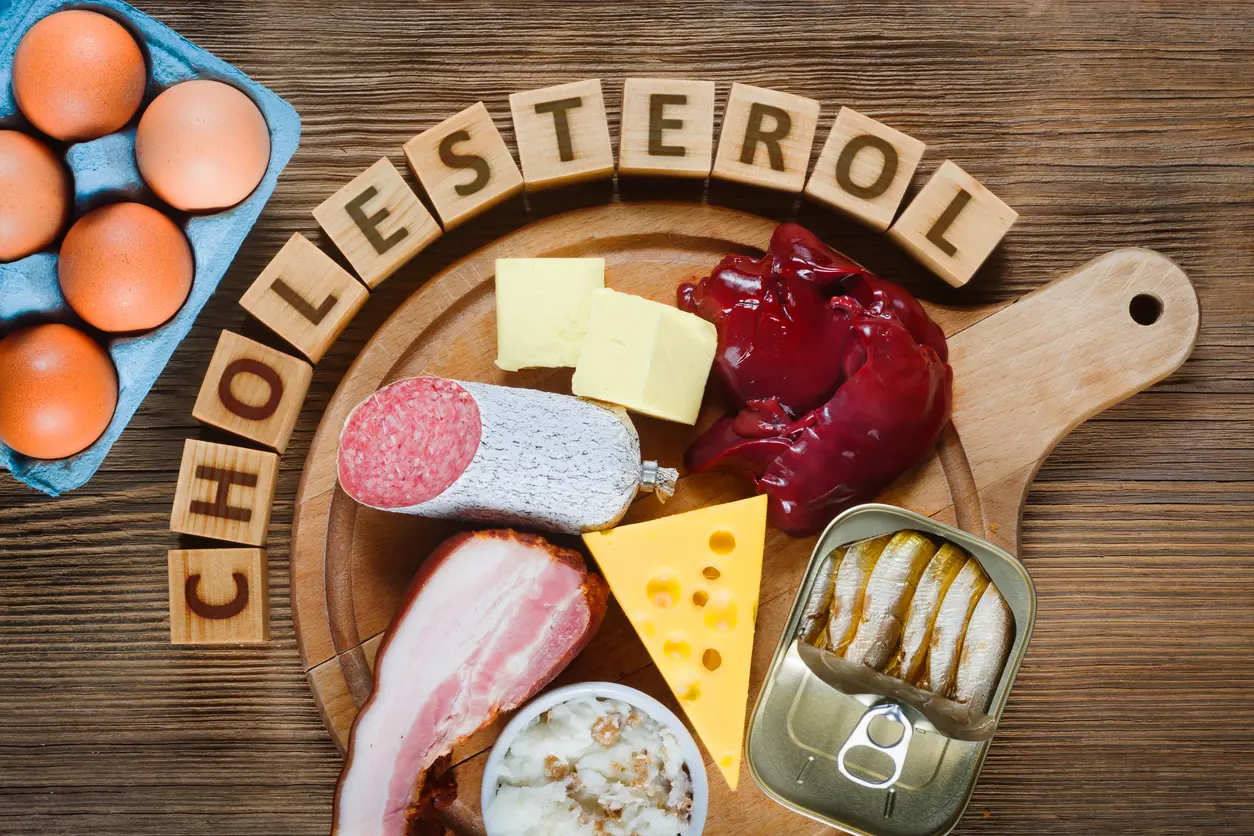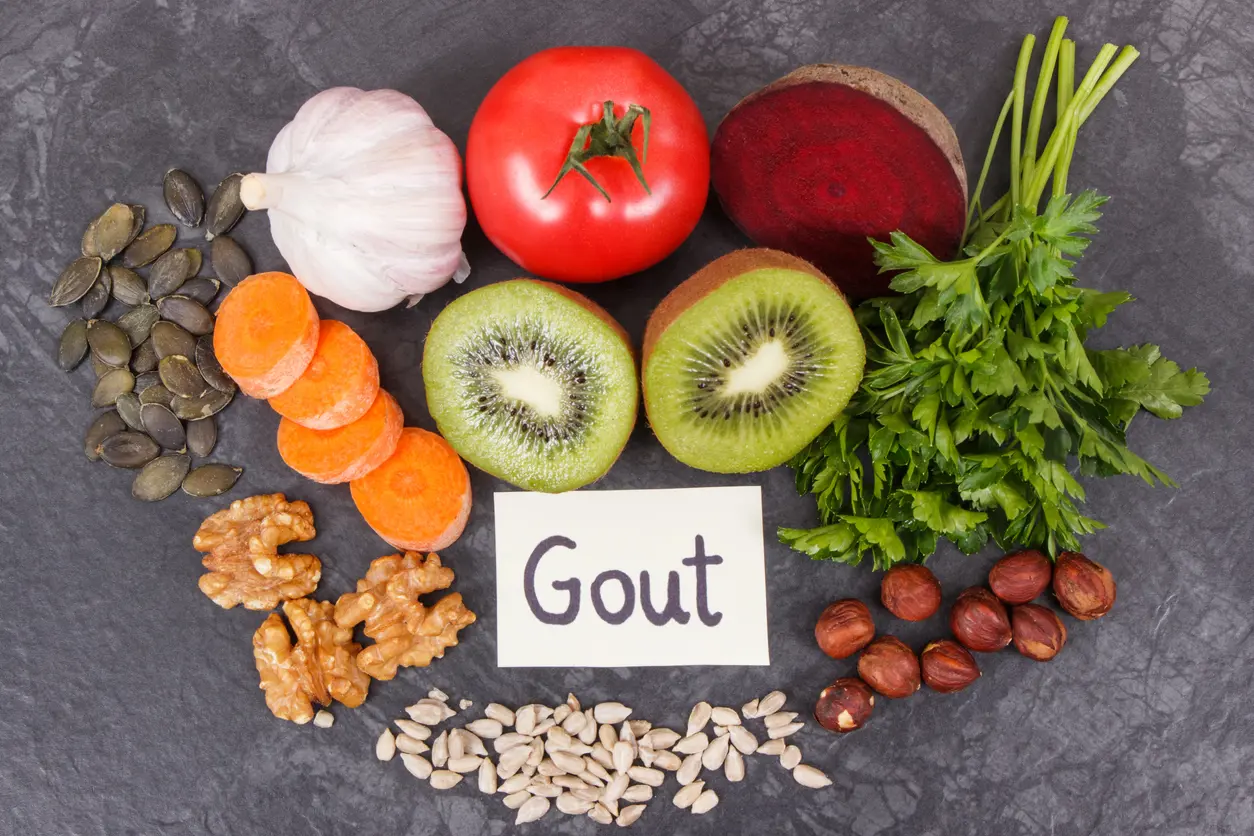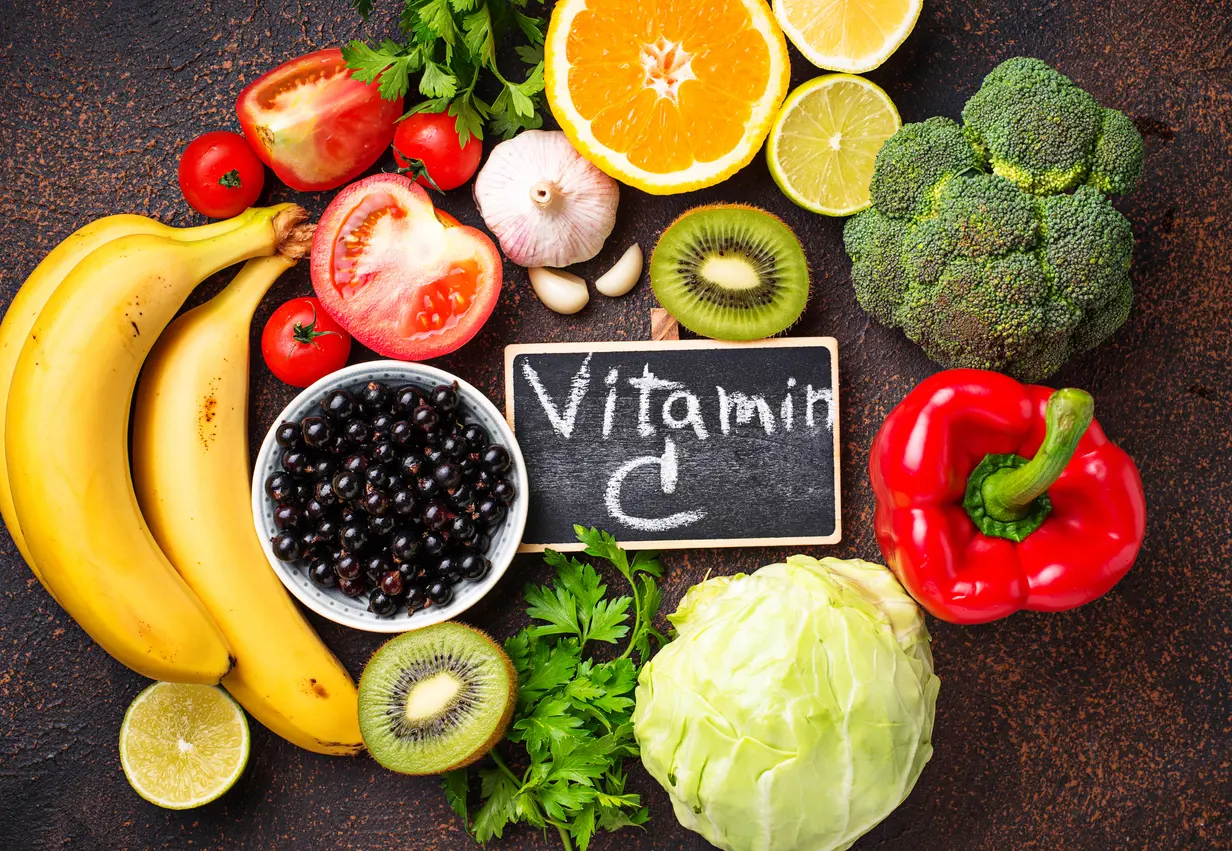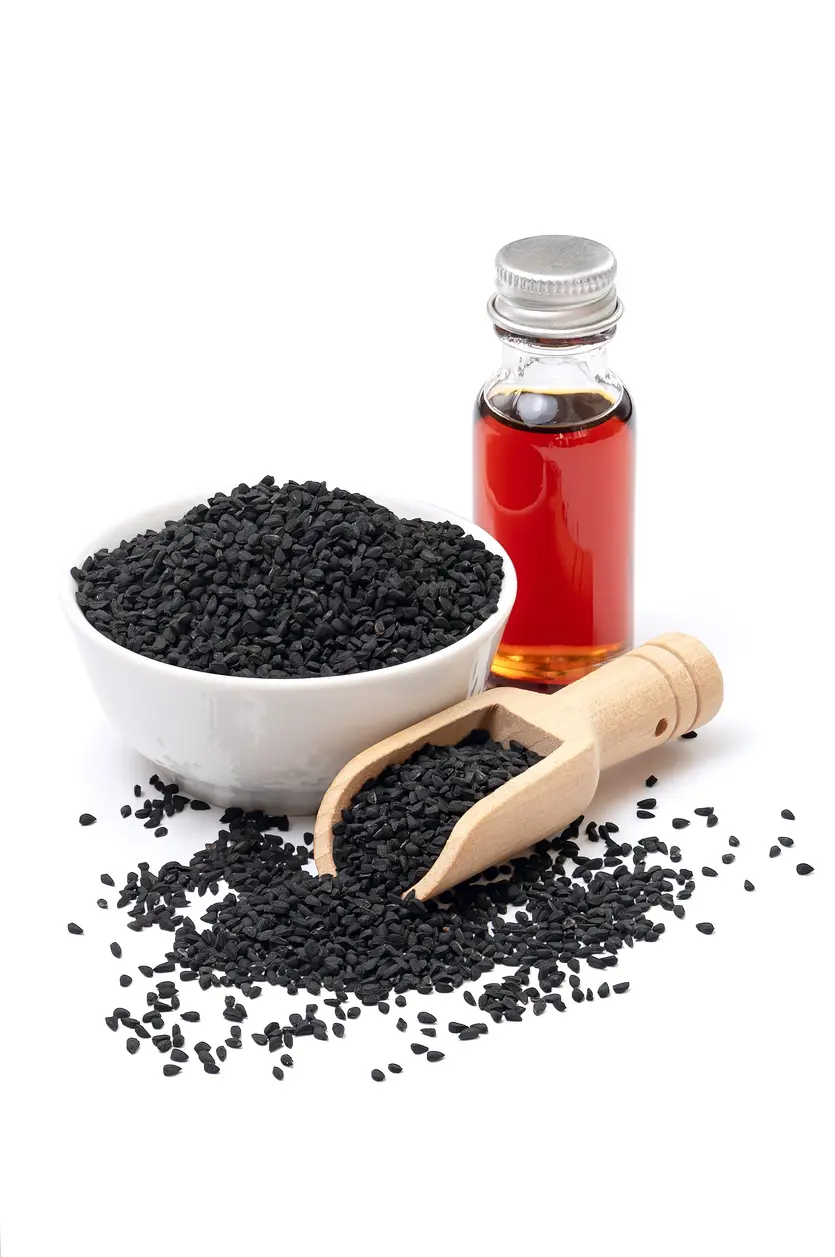Foods And Diet Plans For Anemia, What To Eat And Avoid
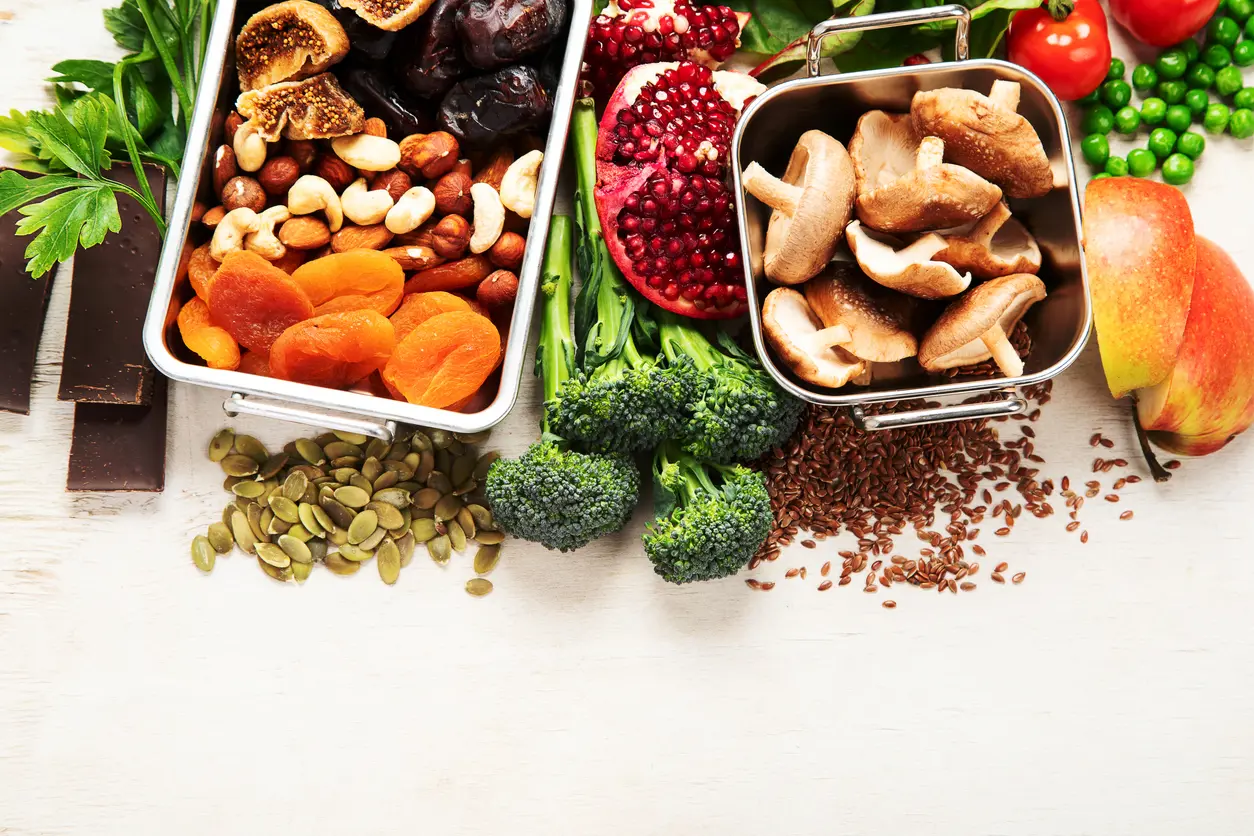
Feeling extra tired lately? These could be signs of anemia, a condition where your blood isn’t carrying enough oxygen throughout your body. While an iron deficiency is the most common cause, anemia can also stem from other deficiencies or conditions. [1] Turner J, Parsi M, Badireddy M. Anemia. [Updated 2023 Aug 8]. In: StatPearls [Internet]. Treasure Island (FL): StatPearls Publishing; 2025 Jan-
The good news? Knowing what to eat for anemia can make a big difference, as diet plays a crucial role in both preventing and treating many types of anemia. The right foods can help rebuild healthy red blood cells and improve iron absorption, while certain foods or habits can hinder this process.
In this article, we’re breaking down the different types of anemia, what foods to focus on, and sharing sample meal plans to help you feel your best again.
Related: Iron-Rich Diet: Foods, Absorption Tips, and How to Prevent Deficiency
Understanding Anemia and Nutrition
Anemia occurs when the body is not making enough red blood cells, which are responsible for transporting oxygen throughout the body. It can be caused by various factors and can range from mild to severe, depending on the individual.
Causes
Iron Deficiency
Iron-deficiency anemia is the most common type of anemia, affecting nearly half of all anemia cases globally. [2] Warner MJ, Kamran MT. Iron Deficiency Anemia. [Updated 2023 Aug 7]. In: StatPearls [Internet]. Treasure Island (FL): StatPearls Publishing; 2025 Jan- It occurs when your body doesn’t have enough iron from the diet to deliver oxygen to the lungs and other tissues in the body. Iron is an essential mineral needed to make hemoglobin, a protein in red blood cells needed for energy production.
Vitamin B12 and Folate Deficiencies
Anemia can also be triggered by other deficiencies that affect red blood cell production, such as vitamin B12 and folate. When the body doesn’t have enough B12 from the diet, it can lead to a condition called megaloblastic anemia, where red blood cells are abnormally large and therefore don’t function properly to transport oxygen. [3] Ankar A, Kumar A. Vitamin B12 Deficiency. [Updated 2024 Sep 10]. In: StatPearls [Internet]. Treasure Island (FL): StatPearls Publishing; 2025 Jan
Folate, another essential mineral, is also crucial for proper red blood cell formation. When someone is deficient in folate, it can lead to dysfunctional red blood cells that don’t transport oxygen properly, leading to insufficient energy. [4] Cleveland Clinic. Folate Deficiency Anemia: Symptoms, Causes & Treatment. Cleveland Clinic. Published September 12, 2022.
Disorders, Trauma, or Surgery
Aside from nutrient deficiencies, anemia can also be caused by blood loss due to a bleeding disorder, such as hemophilia, where the blood does not clot properly. [5] Doherty TM, Kelley A. Bleeding Disorders. [Updated 2023 Apr 3]. In: StatPearls [Internet]. Treasure Island (FL): StatPearls Publishing; 2025 Jan-. It can also be a result of a recent trauma, such as an injury or car accident, as well as an outcome of major surgery.
Poor Iron Absorption
Iron absorption can also be a result of certain conditions, such as celiac disease, a side effect of a gastric bypass, or chronic antacid use. [6] Hanif N, Anwer F. Chronic Iron Deficiency. [Updated 2023 Aug 8]. In: StatPearls [Internet]. Treasure Island (FL): StatPearls Publishing; 2025 Jan
However, eating more vitamin C, such as tomatoes and citrus, can enhance iron absorption. [7] Moustarah F, Daley SF. Dietary Iron. [Updated 2024 Jan 8]. In: StatPearls [Internet]. Treasure Island (FL): StatPearls Publishing; 2025 Jan
Symptoms
Common symptoms of anemia to look out for include fatigue, dizziness, exercise intolerance, and heart palpitations. [8] Auerbach M, DeLoughery TG, Tirnauer JS. Iron Deficiency in Adults: A Review. JAMA. 2025;333(20):1813-1823. doi:10.1001/jama.2025.0452
When your intake of iron, vitamin B12, or folate is not sufficient, your body can’t produce enough healthy red blood cells, leaving you feeling tired, weak, and short of breath. All of these nutrients play a crucial role in producing red blood cells, and without adequate intake or absorption, anemia can develop.
Iron Requirements
Since iron deficiency is the most common, understanding daily iron requirements is a good place to start.
Iron needs vary based on age, sex, and life stage. The Recommended Dietary Allowance (RDA) for adult men (19+) and older women (51+) is 8 mg per day, while women of childbearing age (19–50) need 18 mg per day. [9] Office of Dietary Supplements - Iron. Nih.gov. Published 2025. Accessed June 19, 2025.
Pregnant individuals require more iron, 27 mg, to support increased blood volume and fetal growth. Older adults typically require 8 mg per day as well. [9] Office of Dietary Supplements - Iron. Nih.gov. Published 2025. Accessed June 19, 2025.
A special note for vegans and vegetarians: The RDA for iron for vegetarians is 1.8 times higher than that of those who eat meat. This is because heme iron found in animal-based foods is more easily absorbed than the non-heme iron from plant foods. [9] Office of Dietary Supplements - Iron. Nih.gov. Published 2025. Accessed June 19, 2025. , [10] Chouraqui JP. Dietary Approaches to Iron Deficiency Prevention in Childhood-A Critical Public Health Issue. Nutrients. 2022;14(8):1604. Published 2022 Apr 12. doi:10.3390/nu14081604
Foods That Help Combat Anemia
There are many nutritious foods to eat that you can incorporate to combat anemia and its symptoms.
Iron-Rich Foods
Heme iron (animal-based, easily absorbed): [11] Moustarah F, Daley SF. Dietary Iron. [Updated 2024 Jan 8]. In: StatPearls [Internet]. Treasure Island (FL): StatPearls Publishing; 2025 Jan , [12] Ems T, St Lucia K, Huecker MR. Biochemistry, Iron Absorption. [Updated 2023 Apr 17]. In: StatPearls [Internet]. Treasure Island (FL): StatPearls Publishing; 2025 Jan
- Red meat - beef, lamb
- Liver and organ meats
- Poultry
- Seafood - tuna, salmon, shellfish
Non-heme iron (plant-based, less absorbed): [9] Office of Dietary Supplements - Iron. Nih.gov. Published 2025. Accessed June 19, 2025.
- Lentils, chickpeas
- Tofu
- Spinach, kale
- Pumpkin seeds
- Fortified cereals and grains
Vitamin B12 and Folate Foods
While iron deficiency anemia is more common, eating enough Vitamin B12 and folate can also reduce the risk of other types of anemia, such as megaloblastic anemia, where red blood cells are enlarged.
Vitamin B12: [13] National Institutes of Health. Office of Dietary Supplements - Vitamin B12. Nih.gov. Published 2024.
- Eggs and dairy
- Meat - beef, liver
- Fish and seafood - clams, oysters, salmon
- Fortified plant milks
Folate: [14] National Institutes of Health. Office of Dietary Supplements - Folate. Nih.gov. Published 2022.
- Beef liver
- Leafy greens - spinach, lettuce
- Fortified cereals
- Avocados
- Kidney beans
- Citrus fruits
Overall, the best diet for anemia is one that is balanced and includes all these essential micronutrients.
Vitamin C-Rich Foods
Some studies suggest that combining vitamin C-rich foods with iron-containing foods can increase iron absorption. [7] Moustarah F, Daley SF. Dietary Iron. [Updated 2024 Jan 8]. In: StatPearls [Internet]. Treasure Island (FL): StatPearls Publishing; 2025 Jan This can provide an additional iron boost, especially if you are consuming more plant-based sources of iron that are not as readily absorbed.
Foods high in vitamin C include lemons, oranges, strawberries, bell peppers, kiwi, and broccoli. To pair them together, try adding lemon juice to sautéed spinach or red bell peppers in a kidney bean salad for a delicious flavor and a nutrient boost.
Foods to Avoid with Anemia
While certain foods can enhance iron absorption, some can hinder it. Steer clear of these foods and beverages when consuming foods high in iron to maximize their absorption.
Milk or cheese
Dairy products like milk and cheese are rich in calcium, which can compete with iron for absorption. [14] National Institutes of Health. Office of Dietary Supplements - Folate. Nih.gov. Published 2022. Because of this, consuming these separately from iron sources is recommended.
Tea, coffee, and red wine
These beverages contain compounds called polyphenols, which are overall beneficial for health, but can inhibit iron absorption. [15] Buerkli S, Salvioni L, Koller N, et al. The effect of a natural polyphenol supplement on iron absorption in adults with hereditary hemochromatosis. Eur J Nutr. 2022;61(6):2967-2977. doi:10.1007/s00394-022-02829-8 Wine also contains tannins, which can further reduce absorption. [16] Delimont NM, Haub MD, Lindshield BL. The Impact of Tannin Consumption on Iron Bioavailability and Status: A Narrative Review. Curr Dev Nutr. 2017;1(2):1-12. Published 2017 Jan 19. doi:10.3945/cdn.116.000042
Bran and other whole grains
Bran and other whole grains, such as oats, rye, and rice, contain plant compounds called phytates that can reduce iron absorption [17] Armah SM, Boy E, Chen D, Candal P, Reddy MB. Regular Consumption of a High-Phytate Diet Reduces the Inhibitory Effect of Phytate on Nonheme-Iron Absorption in Women with Suboptimal Iron Stores. J Nutr. 2015;145(8):1735-1739. doi:10.3945/jn.114.209957
Soy protein
Additionally, soy found in protein powders, protein bars, and soybeans contains calcium and phytates that bind to iron, reducing its absorption. More research is needed to determine if there is a certain amount of soy that won’t negatively impact iron absorption. [18] Milman NT. A Review of Nutrients and Compounds, Which Promote or Inhibit Intestinal Iron Absorption: Making a Platform for Dietary Measures That Can Reduce Iron Uptake in Patients with Genetic Haemochromatosis. J Nutr Metab. 2020;2020:7373498. Published 2020 Sep 14. doi:10.1155/2020/7373498
High oxalate vegetables
Certain vegetables contain oxalates, compounds that interfere with iron absorption. However, research shows this is only the case in excessive amounts, and only impacts its absorption in a minor way. [19] Piskin E, Cianciosi D, Gulec S, Tomas M, Capanoglu E. Iron Absorption: Factors, Limitations, and Improvement Methods. ACS Omega. 2022;7(24):20441-20456. doi:https://doi.org/10.1021/acsomega.2c01833 Vegetables high in oxalates include Swiss chard, spinach, rhubarb, and beets.
To maximize iron absorption, consume these foods and iron-rich meals across different times of day so they aren’t eaten together.
Sample Diet Plans for Anemia
If you’re not sure where to start, begin with this simple diet plan that includes iron-rich food for anemia and foods that boost its absorption.
| Sample | 1-Day Iron-Rich Diet Plan |
|---|---|
| Breakfast | Fortified cereal with almond milk + orange slices |
| Snack | Handful of pumpkin seeds + strawberries |
| Lunch | Lentil soup + whole grain toast + mixed salad |
| Snack | Boiled egg + kiwi |
| Dinner | Grilled chicken + sautéed spinach + brown rice |
Incorporating a variety of meat, veggies, beans, and fortified foods can help ensure a wide range of iron, vitamin B12, and folate sources are consumed for optimal energy production.
Additional Diet Tips
Here are a few additional tips to get enough iron and maximize the amount you’re taking in.
Schedule small, frequent iron-rich meals
Breaking up your meals into more frequent, smaller meals makes it easier to get enough iron by the end of the day and provides more opportunities for good nutrition.
Include heme and non-heme sources
Incorporate both heme (animal) and non-heme (plant) iron sources, pairing vitamin C-containing foods with non-heme options.
Avoid drinking tea and coffee with meals
Tea and coffee contain certain plant compounds called polyphenols that can reduce iron absorption. [15] Buerkli S, Salvioni L, Koller N, et al. The effect of a natural polyphenol supplement on iron absorption in adults with hereditary hemochromatosis. Eur J Nutr. 2022;61(6):2967-2977. doi:10.1007/s00394-022-02829-8
Cook in cast-iron pans
Cooking using cast-iron cookware may increase the iron absorption of food, where the iron content of a pan can transfer into the food. [20] Sharma S, Khandelwal R, Yadav K, Ramaswamy G, Vohra K. Effect of cooking food in iron-containing cookware on increase in blood hemoglobin level and iron content of the food: A systematic review. Nepal J Epidemiol. 2021;11(2):994-1005. Published 2021 Jun 30. doi:10.3126/nje.v11i2.36682 Plus, cooking in a cast iron pan lends to delicious flavor - just make sure to use an oven mitt when touching the handle as it can get hot!
When to See a Doctor or Dietitian
If anemia symptoms persist despite dietary changes, it’s important to consult a qualified health provider, such as a doctor or a registered dietitian.
Remember that not all anemia is caused by low iron levels. Other common causes include deficiencies in vitamin B12 or folate, as well as recent blood loss or underlying medical conditions. Before guessing or self-treating, it’s important to first get your vitamin, mineral, and hemoglobin levels checked to determine the root cause of your anemia, its severity, and an appropriate course of treatment.
If diet alone is not enough to treat your anemia, a supplement, medication, or blood transfusion may be needed. It is not recommended to supplement with iron without medical oversight, due to the risk of iron overload, which can increase the risk of liver disease, bone disorders, heart problems, and multi-organ failure. [21] McDowell LA, Chen RJ, Sticco KL. Iron Overload. [Updated 2024 Jan 11]. In: StatPearls [Internet]. Treasure Island (FL): StatPearls Publishing; 2025 Jan-.
Conclusion
Your diet is a powerful tool in both preventing and managing anemia. While there are different types of anemia, a balanced diet with adequate iron, vitamin B12, and folate can help support energy production and oxygen transport through the body, helping you feel your best.
Always consult your medical provider for guidance on the best course of action if you are diagnosed or suspect you have anemia. Additionally, a registered dietitian can help create a personalized diet plan tailored to your specific health needs.
Was this article helpful?
-
Anemia. [Updated 2023 Aug 8]. In: StatPearls [Internet]. Treasure Island (FL): StatPearls Publishing; 2025 Jan-; Turner J, Parsi M, Badireddy M. ;
https://www.ncbi.nlm.nih.gov/books/NBK499994/ -
Iron Deficiency Anemia. [Updated 2023 Aug 7]. In: StatPearls [Internet]. Treasure Island (FL): StatPearls Publishing; 2025 Jan-; Warner MJ, Kamran MT. ;
https://www.ncbi.nlm.nih.gov/books/NBK448065/ -
Vitamin B12 Deficiency. [Updated 2024 Sep 10]. In: StatPearls [Internet]. Treasure Island (FL): StatPearls Publishing; 2025 Jan; Ankar A, Kumar A. ;
https://www.ncbi.nlm.nih.gov/books/NBK441923/ -
Cleveland Clinic. Folate Deficiency Anemia: Symptoms, Causes & Treatment. Cleveland Clinic. Published September 12, 2022. ;
https://my.clevelandclinic.org/health/diseases/24196-folate-deficiency-anemia -
Bleeding Disorders. [Updated 2023 Apr 3]. In: StatPearls [Internet]. Treasure Island (FL): StatPearls Publishing; 2025 Jan-.; Doherty TM, Kelley A. ;
https://www.ncbi.nlm.nih.gov/books/NBK541050/ -
Chronic Iron Deficiency. [Updated 2023 Aug 8]. In: StatPearls [Internet]. Treasure Island (FL): StatPearls Publishing; 2025 Jan; Hanif N, Anwer F. ;
https://www.ncbi.nlm.nih.gov/books/NBK560876/ -
Dietary Iron. [Updated 2024 Jan 8]. In: StatPearls [Internet]. Treasure Island (FL): StatPearls Publishing; 2025 Jan; Moustarah F, Daley SF. ;
https://www.ncbi.nlm.nih.gov/books/NBK540969/ -
Iron Deficiency in Adults: A Review. JAMA. 2025;333(20):1813-1823. doi:10.1001/jama.2025.0452; Auerbach M, DeLoughery TG, Tirnauer JS.;
https://pubmed.ncbi.nlm.nih.gov/40159291/ -
Office of Dietary Supplements - Iron. Nih.gov. Published 2025. Accessed June 19, 2025. ;
https://ods.od.nih.gov/factsheets/Iron-HealthProfessional/#en9 -
Dietary Approaches to Iron Deficiency Prevention in Childhood-A Critical Public Health Issue. Nutrients. 2022;14(8):1604. Published 2022 Apr 12. doi:10.3390/nu14081604 ; Chouraqui JP. ;
https://pubmed.ncbi.nlm.nih.gov/35458166/ -
Dietary Iron. [Updated 2024 Jan 8]. In: StatPearls [Internet]. Treasure Island (FL): StatPearls Publishing; 2025 Jan; Moustarah F, Daley SF. ;
https://www.ncbi.nlm.nih.gov/books/NBK540969/ -
Biochemistry, Iron Absorption. [Updated 2023 Apr 17]. In: StatPearls [Internet]. Treasure Island (FL): StatPearls Publishing; 2025 Jan; Ems T, St Lucia K, Huecker MR. ;
https://www.ncbi.nlm.nih.gov/books/NBK448204/ -
National Institutes of Health. Office of Dietary Supplements - Vitamin B12. Nih.gov. Published 2024. ;
https://ods.od.nih.gov/factsheets/VitaminB12-HealthProfessional/ -
National Institutes of Health. Office of Dietary Supplements - Folate. Nih.gov. Published 2022.;
https://ods.od.nih.gov/factsheets/Folate-HealthProfessional/ -
The effect of a natural polyphenol supplement on iron absorption in adults with hereditary hemochromatosis. Eur J Nutr. 2022;61(6):2967-2977. doi:10.1007/s00394-022-02829-8; Buerkli S, Salvioni L, Koller N, et al. ;
https://pubmed.ncbi.nlm.nih.gov/35320401/ -
The Impact of Tannin Consumption on Iron Bioavailability and Status: A Narrative Review. Curr Dev Nutr. 2017;1(2):1-12. Published 2017 Jan 19. doi:10.3945/cdn.116.000042 ; Delimont NM, Haub MD, Lindshield BL. ;
https://pubmed.ncbi.nlm.nih.gov/29955693/ -
Regular Consumption of a High-Phytate Diet Reduces the Inhibitory Effect of Phytate on Nonheme-Iron Absorption in Women with Suboptimal Iron Stores. J Nutr. 2015;145(8):1735-1739. doi:10.3945/jn.114.209957; Armah SM, Boy E, Chen D, Candal P, Reddy MB. ;
https://pubmed.ncbi.nlm.nih.gov/26041677/ -
A Review of Nutrients and Compounds, Which Promote or Inhibit Intestinal Iron Absorption: Making a Platform for Dietary Measures That Can Reduce Iron Uptake in Patients with Genetic Haemochromatosis. J Nutr Metab. 2020;2020:7373498. Published 2020 Sep 14. doi:10.1155/2020/7373498; Milman NT. ;
https://onlinelibrary.wiley.com/doi/10.1155/2020/7373498 -
Iron Absorption: Factors, Limitations, and Improvement Methods. ACS Omega. 2022;7(24):20441-20456. doi:https://doi.org/10.1021/acsomega.2c01833; Piskin E, Cianciosi D, Gulec S, Tomas M, Capanoglu E. ;
https://pubmed.ncbi.nlm.nih.gov/35755397/ -
Effect of cooking food in iron-containing cookware on increase in blood hemoglobin level and iron content of the food: A systematic review. Nepal J Epidemiol. 2021;11(2):994-1005. Published 2021 Jun 30. doi:10.3126/nje.v11i2.36682; Sharma S, Khandelwal R, Yadav K, Ramaswamy G, Vohra K. ;
https://pubmed.ncbi.nlm.nih.gov/34290890/ -
Iron Overload. [Updated 2024 Jan 11]. In: StatPearls [Internet]. Treasure Island (FL): StatPearls Publishing; 2025 Jan-.; McDowell LA, Chen RJ, Sticco KL. ;
https://www.ncbi.nlm.nih.gov/books/NBK526131/

